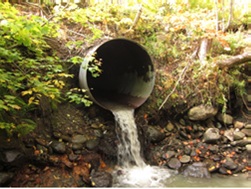Washing hands—repeatedly—is the first line of defense against the COVID-19 virus. Now, more than ever, water is seen an essential element of life.
Although the pandemic indiscriminately attacks rich and poor, old and young, worldwide, it does victimize one out of every four humans disproportionately. These are the 2.2 billion persons who lack clean water. They lack the “luxury” of washing hands, or bathing or drinking clean water.
This pandemic reminds us that we are running several races against time. Obviously, we are in a race to end COVID-19 and prevent escalating deaths. A second race is essential to that victory—the race to provide clean water to every person on the planet. Human population growth has been accompanied by increases in water pollution, escalating shortages of potable water needed to ensure human health and well-being. Many developing nations lack sanitation systems to handle human wastes, and farmlands often allow runoff of animal waste into steams and fields. Streets in many cities and towns are still open sewers. Too many build industrial capacity while neglecting the effluent from factories. Air-born contaminants afflict many communities, first harming lungs and second by resettling out of the air to become part of the water quality problem. All of this adds up. Water pollution literally increases illness and poverty and denies millions protection against illnesses like COVID-19.
None of this water contamination needs to happen. It is prevented in many nations. The United Nations, through its UN-Water Organizations, has made great strides in advancing the supply of clean water to communities. The Food & Agricultural Organization’s “One Water One Health” program is, for example, building capacity in many countries to avert water contamination, supporting world Sustainable Development Goal 6, which aims to “ensure availability and sustainable management of water and sanitation for all” by 2030.
Will the pandemic disrupt efforts to ensure that people everywhere have clean water? As economies are “restarted,” will there be adequate funding for and attention to clean water infrastructure? Counterintuitive though it appears, the pandemic could actually stimulate countries to advance water quality goals. Why?
 There is a third race. This is the race between escalating encounters with infectious diseases, like COVID-19, and countermeasures to avert or prevent the next pandemic. Viruses and bacteria infect humans more frequently for several reasons. These microbes live in wild or domesticated animals, their hosts. When humans disrupt the healthy living conditions for these animals, they tend to shed their microbes. A novel coronavirus in an unhealthy or stressed host seeks a new host and can find it in humans. Unsustainable development practices are increasingly causing spillovers of disease from animals to humans. This is the phenomenon of “zoonosis”. The World Health Organization reports that 60% of human illnesses are the result of zoonosis and 75% of recent epidemics are zoonotic. Think of HIV/AIDS, Ebola, or SARS and MERS.
There is a third race. This is the race between escalating encounters with infectious diseases, like COVID-19, and countermeasures to avert or prevent the next pandemic. Viruses and bacteria infect humans more frequently for several reasons. These microbes live in wild or domesticated animals, their hosts. When humans disrupt the healthy living conditions for these animals, they tend to shed their microbes. A novel coronavirus in an unhealthy or stressed host seeks a new host and can find it in humans. Unsustainable development practices are increasingly causing spillovers of disease from animals to humans. This is the phenomenon of “zoonosis”. The World Health Organization reports that 60% of human illnesses are the result of zoonosis and 75% of recent epidemics are zoonotic. Think of HIV/AIDS, Ebola, or SARS and MERS.
The novel coronavirus that causes COVID-19 likewise started in the animal kingdom and left it to infect humans, and then humans shared the virus among themselves. Unfortunately, these spillovers are increasing. Unless governments and communities contain zoonotic spillovers, the “next” pandemic will surely come. The means to avert such disastrous infections are known, but all nations will need to build their capacity to undertake them.
Compared with the incalculable economic losses from COVID-19, the enormous costs of caring for the ill, and the search for a vaccine, the investments in ensuring clean water and animal health are almost negligible. For example, nations could establish the best practices recommended by the FAO “One Water One Health” program in less than a decade. This program recognizes that important intersection between water and agriculture including livestock. Agriculture demands a large amount of water and accounts for 70% of freshwater withdrawals worldwide. Irrigated agriculture is very important as it produces approximately 40% of the world’s food on only 20% of global cropland. It will continue to be important in the future, when we have to produce around 50% more food by 2050 to feed a growing population. These demands on water resources must be met in a manner that is ecologically sound and prevents water-borne pathogens and risks from spilling over from animals to humans and vice-versa—this is among the goals of the One Water One Health Program.

There are other supporting initiatives as well. On the eve of COVID-19, the Wildlife Conservation Society and the Federal Republic of Germany, along with many others in the global community at the One Planet, One Health, One Future conference endorsed a set of best practices to cope with zoonosis more broadly. The “Berlin Principles” emerging from that conference state the task plainly: “Recognize and take action to: retain the essential health links between humans, wildlife, domesticated animals and plants, and all nature; and ensure the conservation and protection of biodiversity, which interwoven with intact and functional ecosystems provides the critical foundational infrastructure of life, health and well-being on our planet.”
To avert the next pandemic, humans, and the planning processes and systems upon which they rely, must do more to help ensure that animals and their habitats are healthy. To this end, intrusions into wild forests, wetlands, or other habitats need to increasingly be mindful of the need to ensure that ecological health is sustained. More buffer zones will be needed around protected natural areas to manage the human/animal interface. Techniques such as environmental impact assessment, which enables identification of zoonotic spillover risks, will need to be observed more rigorously. Green infrastructure, such as forested areas and wetlands, will become increasingly important in capturing and filtering water runoff and preserving biodiversity and ecosystem services. Emerging technologies will also help. Innovations in enhanced environmental sensing, water quality and food safety monitoring, zoonosis risk assessment, and data analytics are likely to accelerate through machine learning and pathogen genome sequencing.
The races that we are running can be won, but only if we see water quality and health as the truly intertwined goals that they are. Simply put, water is life. It is a fundamental element of human survival and dignity. It is the basis for the resilience of societies, vital for human nutrition and health. Water as a conduit can spread water-associated, vector-borne diseases, old and new, and easily impact human, animal, and ecosystem health. Clean water, on the other hand, can help wash away today and tomorrow’s problems.

